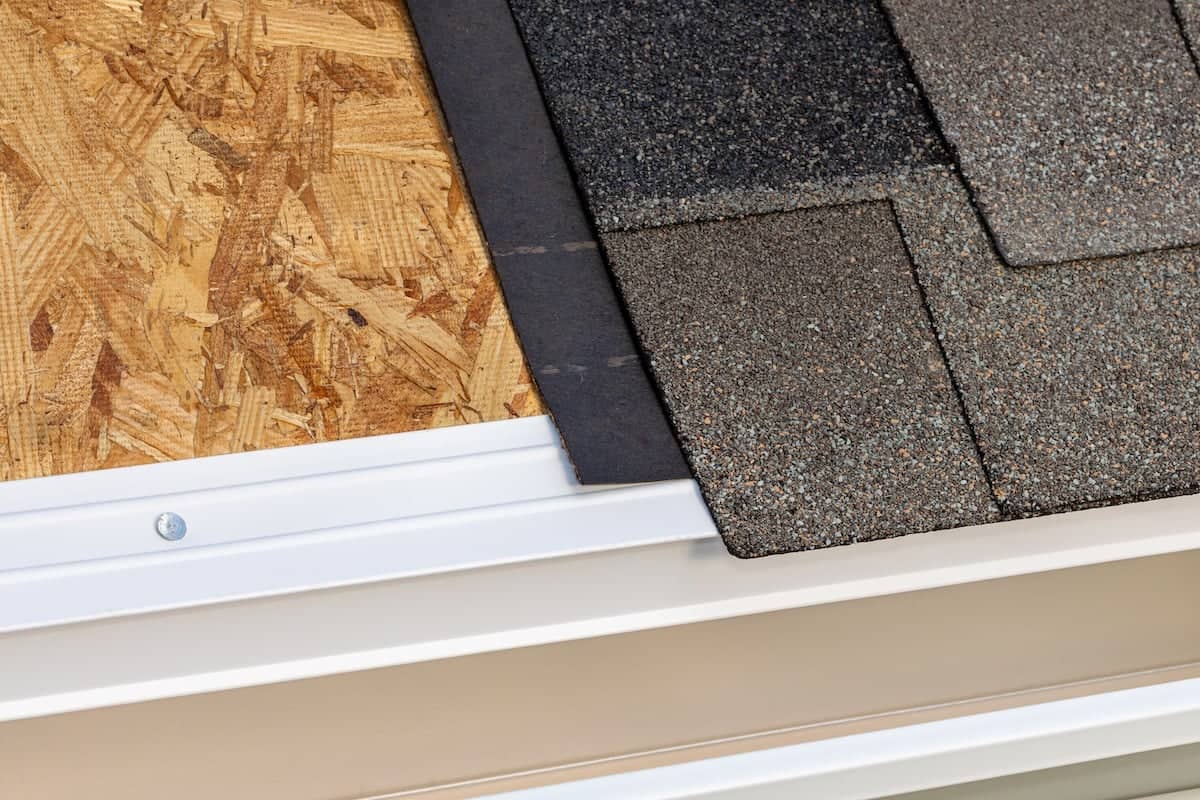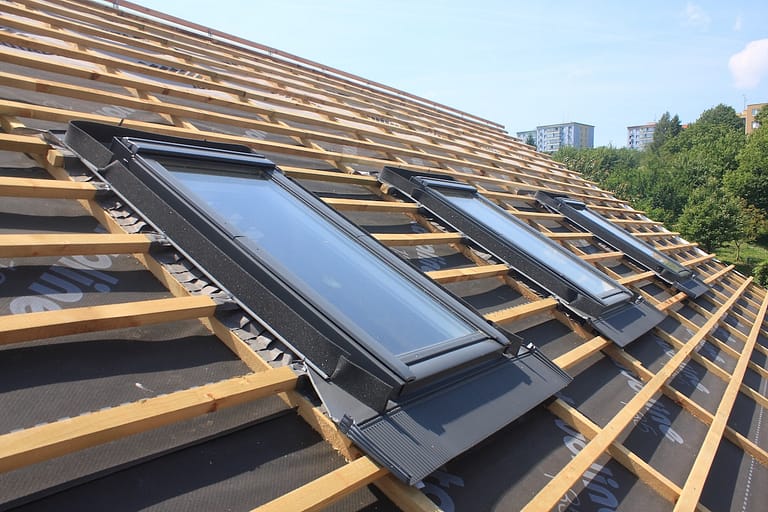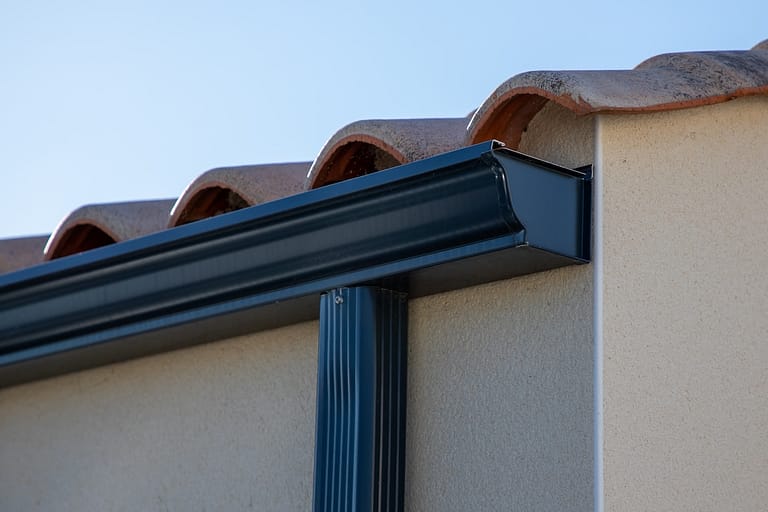Understanding the different roof layers in your home’s roofing system can help you make smarter decisions during repairs, replacements, or inspections. A roof isn’t just shingles — it’s a system of protective components working together to keep your home safe, dry, and energy-efficient.
In this blog, we’ll walk you through each layer, from the visible shingles to the unseen materials beneath them. You’ll learn about:
- The structure of a complete roofing system: What’s underneath your shingles and why it matters.
- Functions of each layer: How they protect your home from weather, moisture, and structural damage.
- Signs of damage: When to repair or replace parts of your roof system.
Let’s peel back the layers and take a closer look at what’s protecting your home.
❗️ Why Knowing Your Roof Layers Matters
Your roof is more than just curb appeal. Every component plays a key role in defending your home from the elements. When something goes wrong — like a leak or storm damage — knowing the layers involved can help you understand the repairs your home might need.
Total Protection
Each layer in the roof system is designed to:
- Block moisture: Prevent water intrusion that can lead to rot or mold.
- Improve energy efficiency: Minimize heat loss in winter and heat gain in summer.
- Support durability: Reinforce the overall structure and extend roof life.
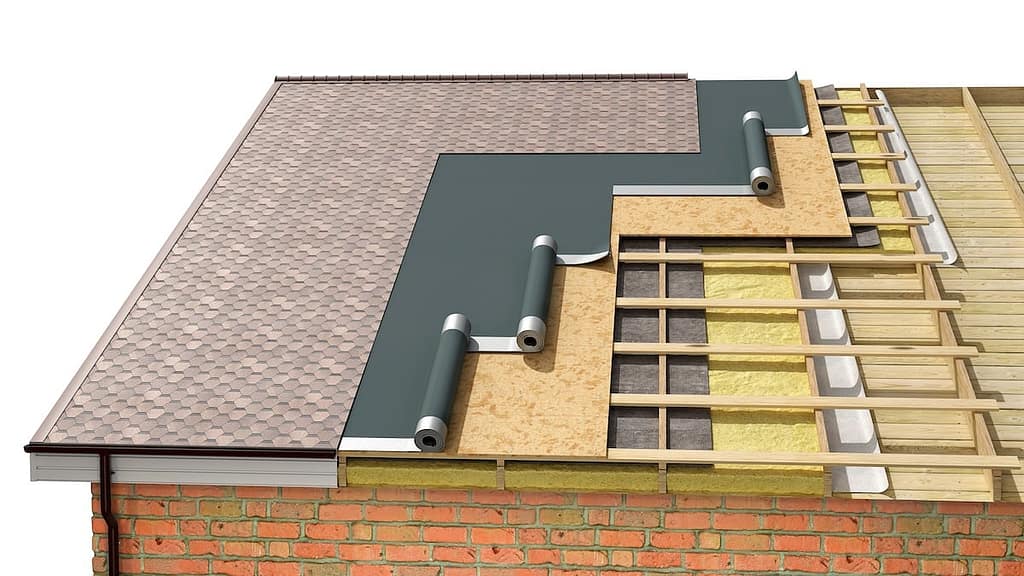
⭐️ The 7 Roof Layers Explained (Roof Deck, Shingles, Vents, and More!)
Here’s a detailed breakdown of the most important roof layers you’ll find in a standard residential roofing system:
- Roof Decking (Sheathing):
The foundation of your roof, usually made of plywood or OSB (oriented strand board). It’s installed directly over the rafters or trusses and supports all the layers above. - Ice and Water Shield:
A self-adhering waterproof membrane placed along roof edges, valleys, and penetrations. It protects against ice dams and wind-driven rain that can seep under shingles. - Roof Underlayment:
A water-resistant or waterproof layer (like felt or synthetic underlayment) that acts as a second barrier against moisture. It lies between the decking and the shingles. - Starter Shingles:
These are the first row of shingles installed at the eaves and rake edges. They prevent water from entering beneath the main shingle layer and help secure the first course of shingles. - Shingles or Roofing Material:
The outermost layer — typically asphalt shingles, metal panels, tile, or cedar shakes. This layer shields the home from sun, wind, rain, and snow while giving it visual character. - Flashing:
Thin metal sheets installed around chimneys, skylights, vents, and valleys to direct water away from vulnerable areas. Flashing helps prevent leaks in joints and seams. - Ridge Cap Shingles and Ventilation:
These specialized shingles cover the roof’s peak and allow for proper attic ventilation. A well-vented attic helps prevent moisture buildup and extends roof life.
💪 Additional Elements That Support Your Roof
While not always considered “layers,” these components are essential to a long-lasting and high-performing roofing system. They work in tandem with the main roof layers to provide complete protection and structural integrity.
Roof Vents
Proper airflow through the attic helps prevent condensation, reduce heat buildup, and keep your roofing materials from wearing out prematurely. Ventilation also plays a critical role in minimizing the risk of mold and improving your home’s overall energy efficiency by allowing hot air to escape in the summer and reducing moisture in the winter. These can include ridge vents, box vents, turbine vents, and more!
Drip Edge
- Edge protection: A metal strip installed along the edges of the roof to guide water away from the fascia and into the gutters. Without a drip edge, water can seep behind your gutters and damage the trim or siding.
- Building code compliance: Required by most roofing codes to prevent water damage and maintain warranty eligibility on new roof installations.
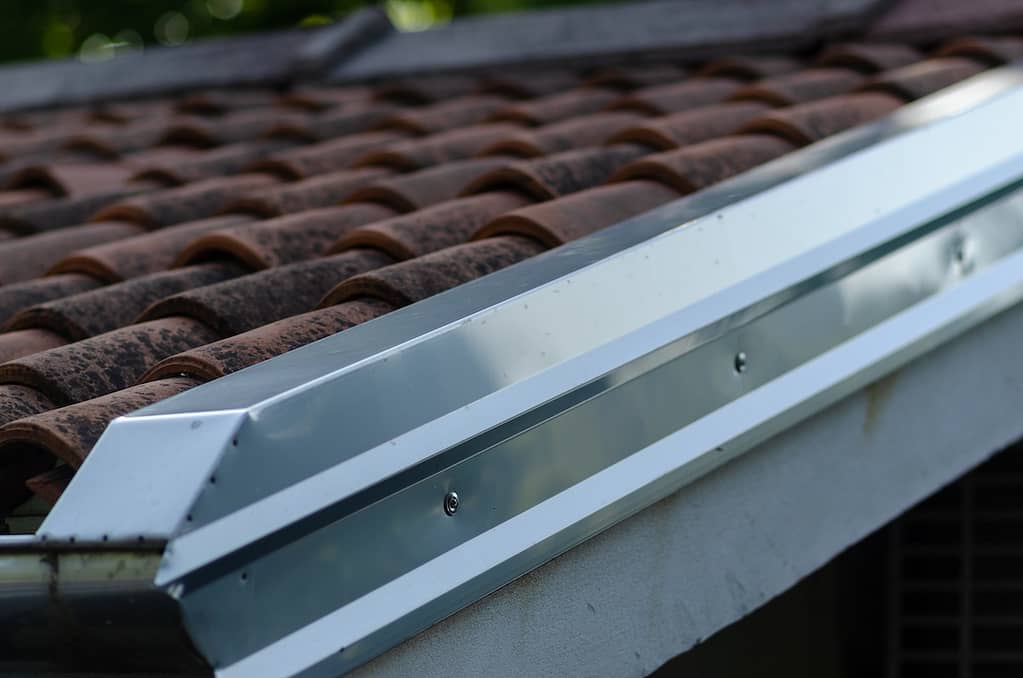
Roof Valleys
Valleys are where two roof slopes meet, and they channel large amounts of water during rainstorms. These areas are reinforced with underlayment, flashing, and specialized installation techniques to ensure durability. Because valleys experience higher water flow than other parts of the roof, they’re one of the most critical areas to inspect and maintain regularly for signs of wear, leaks, or shingle displacement.
👉 Why Each Roof Layer Matters
Every layer in your roofing system has a specific purpose. Missing or improperly installed layers can lead to long-term problems — even if the outer surface looks fine.
Moisture Protection
Without a solid underlayment or properly sealed flashing, water can find its way beneath shingles and damage the decking, insulation, and even your interior walls or ceilings.
Energy Efficiency
Insulation and ventilation go hand-in-hand with your roofing layers. Poor ventilation or missing attic airflow can cause your roof to overheat, leading to premature material failure and higher energy bills.
Wind and Storm Resistance
- Starter shingles and fasteners: These elements ensure shingles stay put in high winds.
- Ice and water barriers: Provide extra defense during winter storms or hurricanes.
⚠️ How To Know When Roof Layers Are Failing
Sometimes, you won’t see roof damage until it’s too late. But here are some telltale signs that one or more roof layers may need attention:
- Leaks or water stains: Could indicate underlayment or flashing failure.
- Curling or missing shingles: Suggest the starter shingles or decking may be compromised.
- Ice dams in winter: Often point to poor ventilation or missing ice and water shields.
- Visible sagging or soft spots: Likely caused by damaged decking or water infiltration.
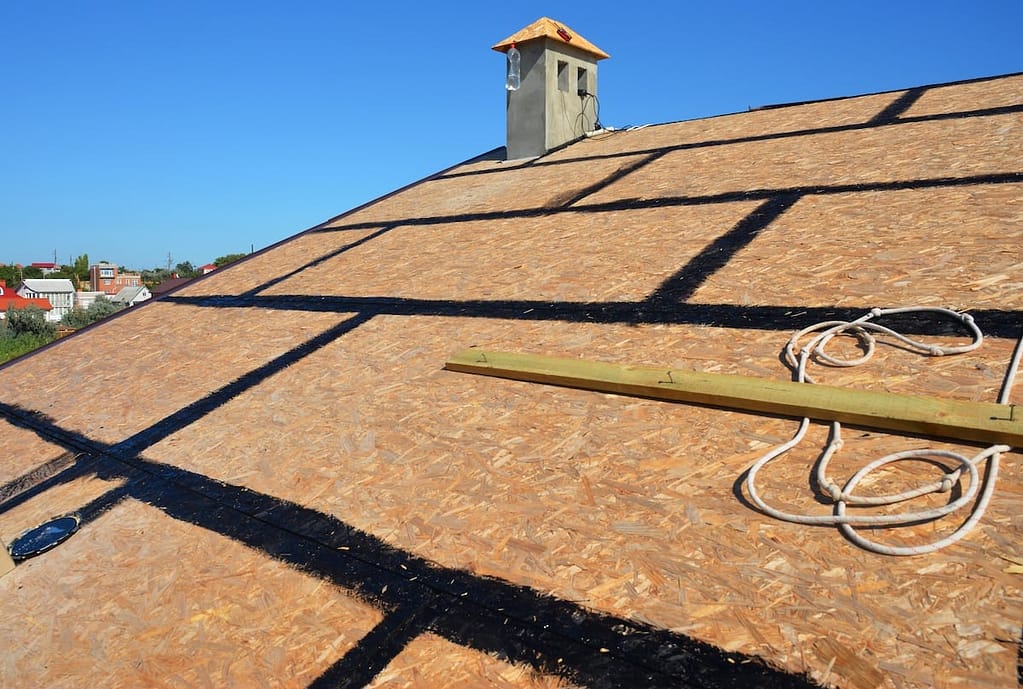
🤝 Trust O’Donnell Roofing Co. To Protect Every Layer
As roofing contractors, we believe that a quality roof means more than great-looking shingles. That’s why we install and inspect every layer of your roof system with care and precision — from the decking to the ridge caps.
Your roof is only as strong as its weakest layer. Whether you’re planning a roof replacement, facing storm damage, or just want peace of mind, O’Donnell Roofing Co. is here to help.
Contact us today for a free inspection and estimate. We’ll walk you through each roof layer, explain what your system needs, and ensure your home is protected from the inside out.
